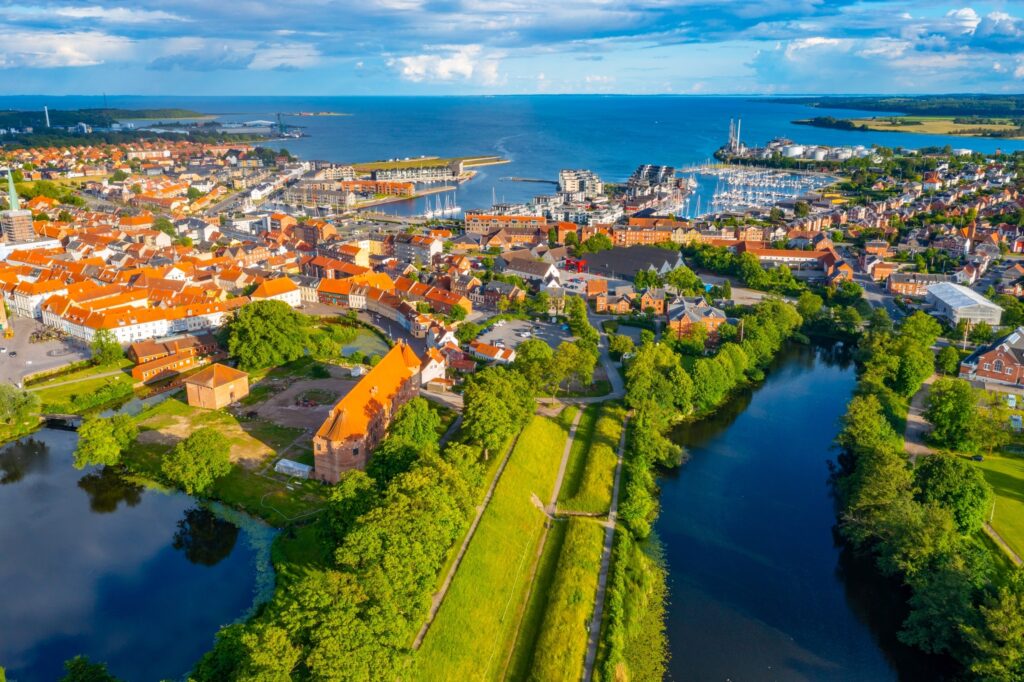PDU Funen
Articles
green housing days in nYBORG
When the green transition starts in homeowners’ everyday life
How do you get more homeowners to renovate their homes for energy efficiency and contribute to the green transition? In Nyborg Municipality, the choice has been a local and hands-on approach: Green Housing Days. The initiative was developed by PDU Funen under the COHEAT project and shows how personal contact, local cooperation, and concrete demonstrations can motivate more people to act.
115. May 2025

Background: The Potential in private homes
In Nyborg Municipality there are more than 2,700 homes with an energy label of D, E, F, or G (energy performance certificates). These are precisely the houses with high energy consumption—and where renovation can deliver the biggest savings. For the municipality, there is both a climate and a citizen agenda in making energy renovation more accessible: lower bills for residents and lower CO₂ emissions for the community.
As a homeowner, however, it can be hard to know where to start. Should the roof be insulated? Should the windows be replaced? And how does that fit with an old gas boiler that will need replacing in the coming years? These are exactly the questions Nyborg Municipality addressed through Green Housing Days.
Personal communication builds engagement
The first step was a personal letter via e-Boks (Denmark’s digital mailbox) to the 2,700 homeowners with low energy labels. The letter invited them to Green Housing Days—a campaign of 10 events around the Municipality in spring 2025.
The message was simple: “We want to help you get started.”
This direct contact showed homeowners that their situation was taken seriously. It made a stronger impression than a general campaign or a social-media post.
Local cooperation gives the full picture
At Green Housing Days, the municipality, banks, real-estate agents, tradespeople, builders’ merchants, and suppliers stood side by side. Residents could ask about everything from insulating roofs and walls to financing options and the home’s resale value.
This holistic approach made it possible to give homeowners a complete view—the technical solutions, the financial possibilities, and the legal framework. It created confidence and made it easier to decide.
“Even though energy prices aren’t sky-high right now, we’re aware that this can change again—and it becomes more expensive if you live in a house where the insulation isn’t up to scratch or older installations guzzle electricity. In addition, we emit unnecessarily large amounts of CO₂ just to heat older houses. So there’s a lot to gain—both for residents and for the municipality’s climate ambitions—when more people renovate their homes for energy efficiency.”
Per Jespersen, Chair of the Climate and Nature Committee
LESSONS LEARNED
√ Direct contact builds trust and engagement.
√ Local cooperation across stakeholders creates a shared overview.
√ Hands-on demonstrations inspire action.
√ Focusing on energy labels targets the effort.
Hands-on demonstration and green home talks
The events were not just presentations and brochures. There were practical demonstrations, energy checks, and opportunities to meet local tradespeople. Many residents highlighted the informal conversations over a cup of coffee as especially valuable—this made energy renovation more down-to-earth and understandable.
Results: From knowledge to action
Early experience shows that Green Housing Days have led to:
- Greater awareness of energy labels and the potential of energy renovations.
- More homeowners who have already started concrete measures.
- Expected reductions in energy use and CO₂ emissions across the municipality.
As Per Jespersen, Chair of the Climate and Nature Committee, puts it:
“There is a lot to gain—both for residents and for the whole municipality—when more people renovate their homes for energy efficiency.”

